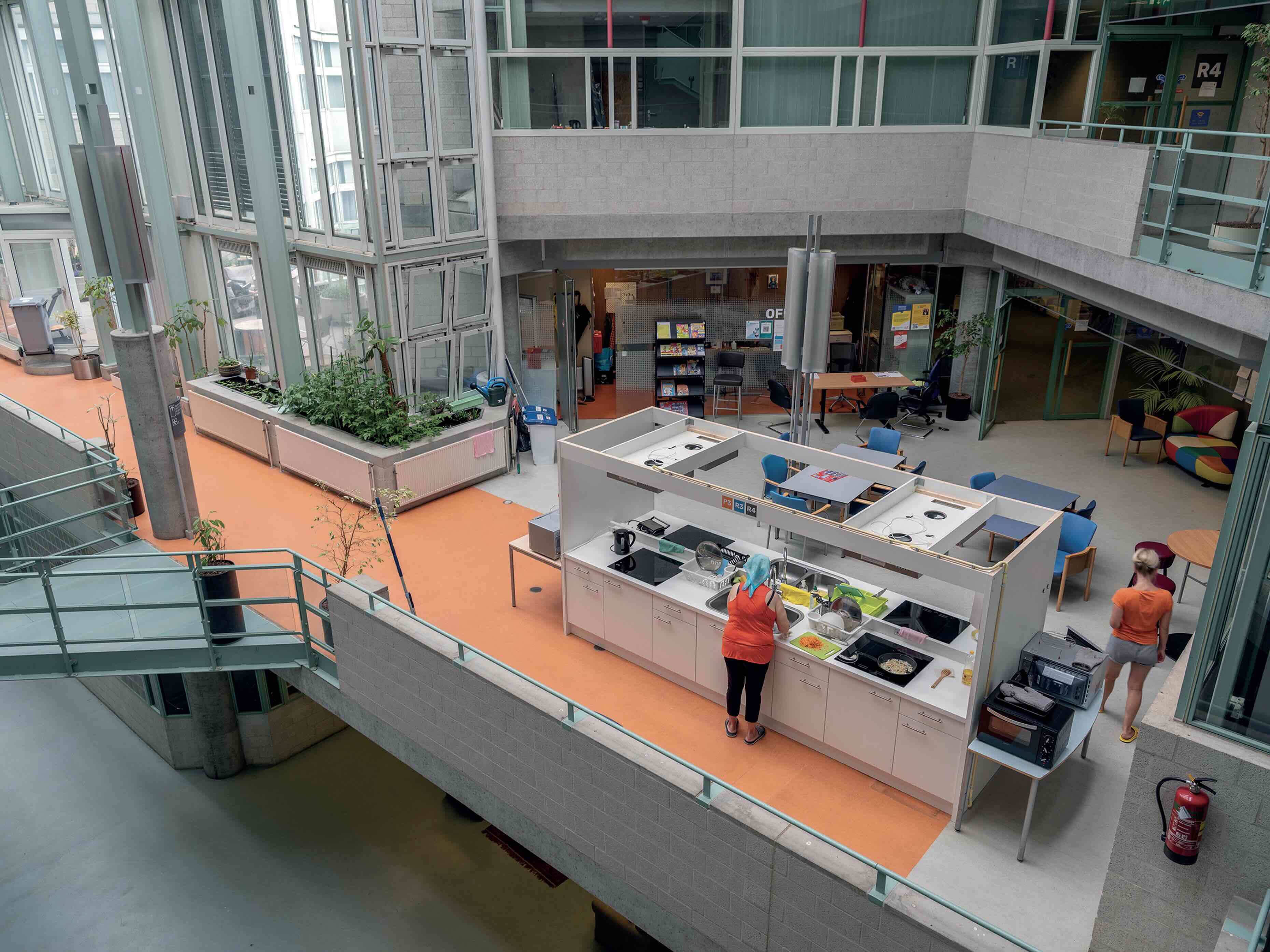Scant hope of an untroubled old age
The fate of post-1965 buildings
DOI:
https://doi.org/10.48003/knob.122.2023.4.809Downloads

Abstract
Buildings completed after about 1964 cannot count on surviving into old age, however robust some of them may still be. Any building can perish, irrespective of age, structural condition or architectural quality. Once the idea that a building is in the way has taken hold, its chances of being torn down are considerable. All the more so if the building has lost its original function and been fully written off. This essayistic article takes the position that the functionalist fixation on fitness for purpose has fed through into the way existing buildings are treated and the intellectual reflection on that. Take Stewart Brand’s famous diagram. It distinguishes the various material layers of a building according to their different lifespans, yet that is no guarantee that those lifespans will be respected in practice: a building is by no means always treated justly, let alone the material lifespan of the different layers of a building. Nevertheless, for anyone devoted to the city as cultural project, there is still Aldo Rossi’s renowned theory regarding a city’s ‘permanences’ of cultural value. The lifespan problem of more recent architecture is amplified by the fact that buildings are increasingly categorized as a neutral amenity, in other words, a commodity. As such, they can be manipulated at will and without taking account of any architectural merits they may possess. Two highly regarded buildings by the architect Herman Hertzberger have struggled to survive in recent years: the Centraal Beheer offices in Apeldoorn (1968-1972) and the Ministry of Social Affairs in The Hague (1979-1990). Although both buildings were designed to be functionally flexible, that has not rendered them proof against the whims of the real estate market: the survival of both buildings is still on the line in 2023.
Paradoxically, the second case study presented in this article is more hopeful, even though it concerns a building that was most certainly not designed to be adaptable. It is the office of the Kralingen water company in Rotterdam (1973-1979) by Wim Quist. While the initial idea for the extension of this building gave rise to conflict, mediation eventually produced an architecturally convincing solution acceptable to all the parties involved, including the original architect.
References
F. Claessens, ‘In memoriam Runcorn’, Oase 57 (2001), 104-117.
Claessens 2001 (noot 1), 104.
F. Scott, On altering architecture, Abingdon 2008, 1. DOI: https://doi.org/10.4324/9780203590591
S. Brand, How buildings learn, Londen 1994.
A. Rossi, The architecture of the city, Cambridge 1982 (1966), 21. Voor een compacte reconstructie van het denken van Aldo Rossi over monument en stad, zie: B. Colenbrander, De verstrooide stad, Rotterdam 1999, 122-125.
R. Roorda en B. Kegge, Vital architecture. Tools for durability/Vitale architectuur. Gereedschap voor levensduur, Rotterdam 2016.
H. Hertzberger, ongepubliceerde tekst ‘Van “werkplaats voor 1.000” naar overdekte ministad’, 2 december 2021. Ter beschikking gesteld aan auteur door bureau AHH.
R. Baumeister en S. Petermann, Back to the office. 50 revolutionary office buildings and how they sustained, Rotterdam 2022, 388-399. Informatie ook ontleend aan een interview van auteur met Herman Hertzberger en Laurens-Jan ten Kate, Amsterdam 1 juni 2023.
AHH, SoZaWe. De toekomst van het voormalige gebouw Ministerie van Sociale Zaken. Poort naar de stad, Amsterdam 2021.
Vonnis in kortgeding 5 november 2021, rechtbank Rotterdam zaaknummer C/10/621627 / KG ZA 21-584.
Gespreksnotitie Floris Alkemade, d.d. 22 december 2021, ter inzage gegeven aan auteur. Interview auteur met Floris Alkemade, Sint-Oedenrode, 30 mei 2023.
Interview auteur met Michiel Raaphorst en Frank Huibers (V8 architecten), Rotterdam 22 juni 2023.
Published
How to Cite
Issue
Section
Articles
License
Copyright (c) 2023 Bernard Colenbrander

This work is licensed under a Creative Commons Attribution 4.0 International License.





